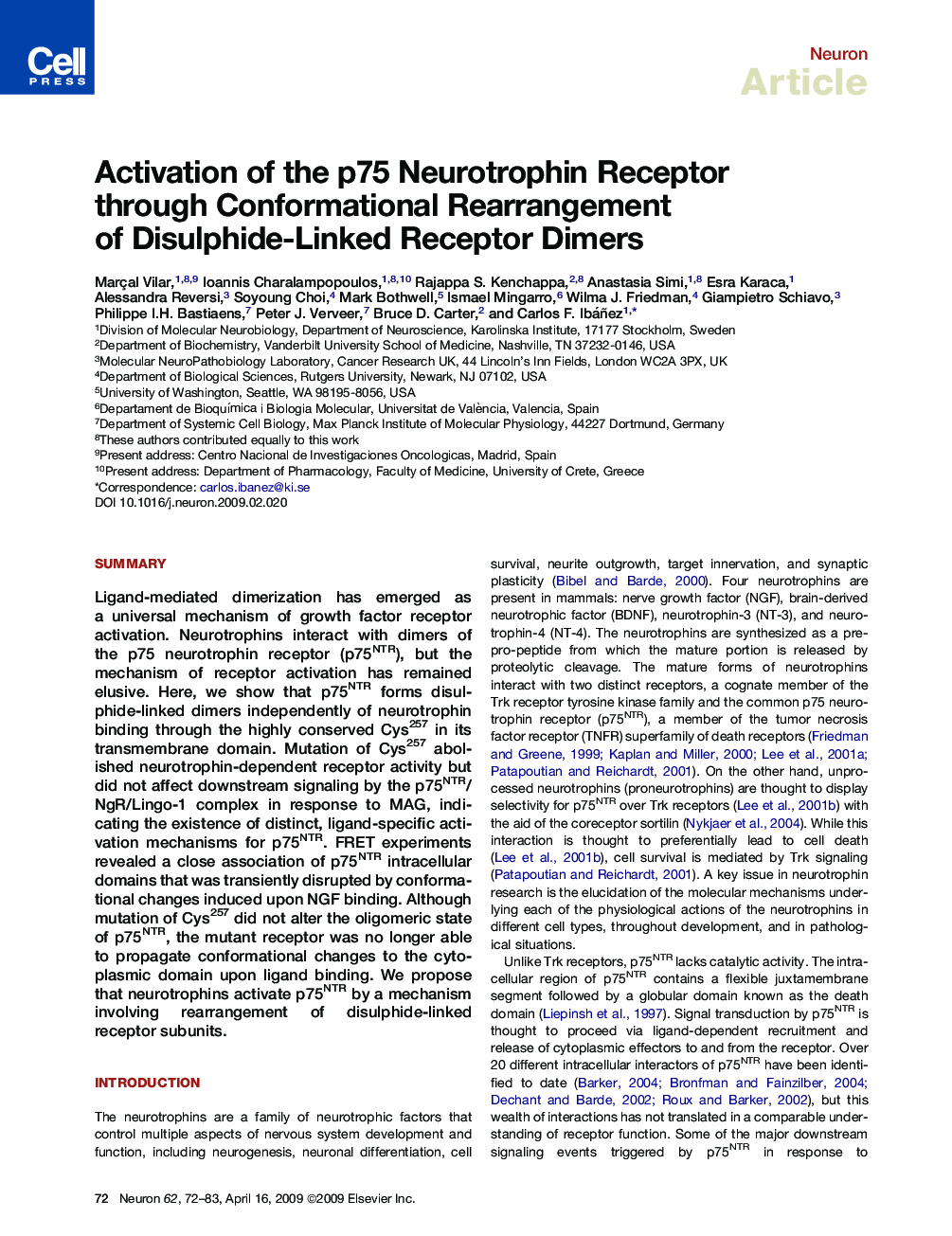| Article ID | Journal | Published Year | Pages | File Type |
|---|---|---|---|---|
| 4323006 | Neuron | 2009 | 12 Pages |
SummaryLigand-mediated dimerization has emerged as a universal mechanism of growth factor receptor activation. Neurotrophins interact with dimers of the p75 neurotrophin receptor (p75NTR), but the mechanism of receptor activation has remained elusive. Here, we show that p75NTR forms disulphide-linked dimers independently of neurotrophin binding through the highly conserved Cys257 in its transmembrane domain. Mutation of Cys257 abolished neurotrophin-dependent receptor activity but did not affect downstream signaling by the p75NTR/NgR/Lingo-1 complex in response to MAG, indicating the existence of distinct, ligand-specific activation mechanisms for p75NTR. FRET experiments revealed a close association of p75NTR intracellular domains that was transiently disrupted by conformational changes induced upon NGF binding. Although mutation of Cys257 did not alter the oligomeric state of p75NTR, the mutant receptor was no longer able to propagate conformational changes to the cytoplasmic domain upon ligand binding. We propose that neurotrophins activate p75NTR by a mechanism involving rearrangement of disulphide-linked receptor subunits.
